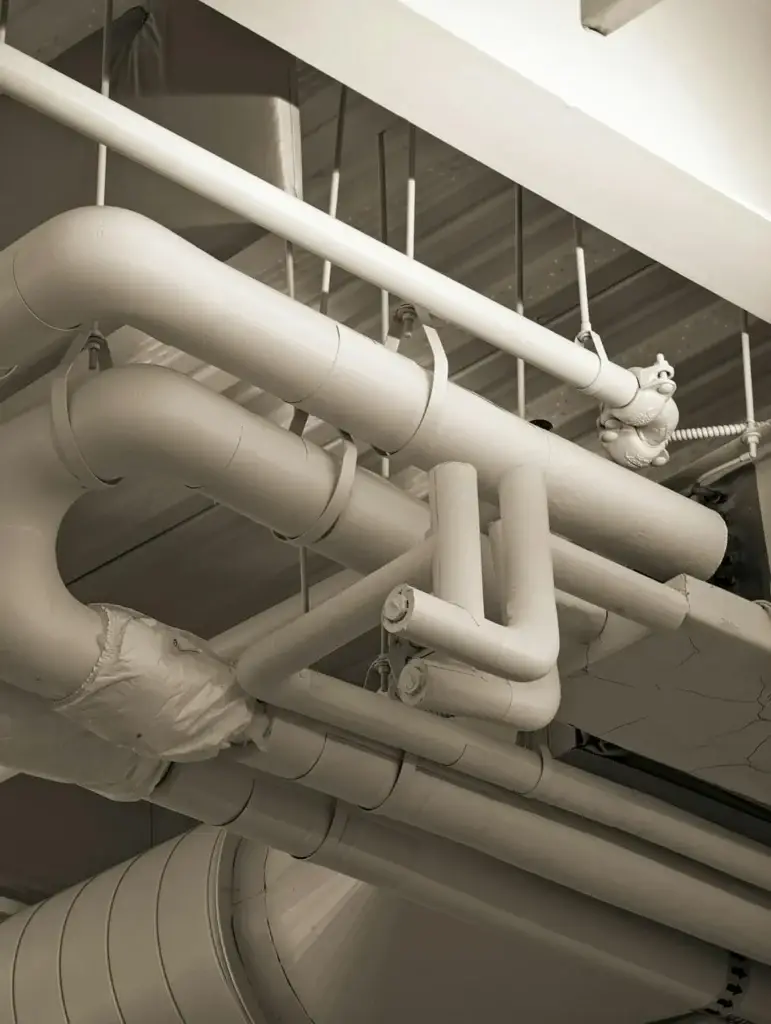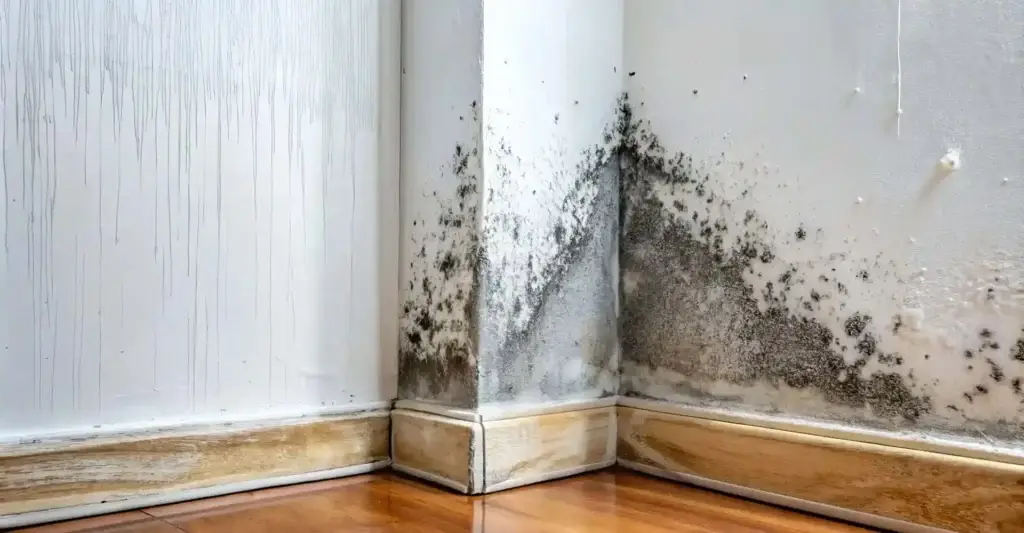Quick answer
To recover quickly and effectively from commercial water damage in the UK, businesses must act immediately to mitigate significant financial losses and minimise disruption. Common causes include flooding, plumbing failures, and roof leaks. The recovery process involves critical stages: first, rapid water removal and specialised drying (mitigation) to prevent severe secondary damage, particularly pervasive damp and mould growth. This is followed by a comprehensive professional assessment to identify all hidden damage. Expert water damage restoration services are essential to manage complex clean-up, ensure thorough property drying, facilitate proper hygiene, and implement precise recommendations, enabling a swift return to normal operations and protecting long-term business viability.
Commercial water damage in the UK
In the UK, 40% of commercial property insurance claims are for water damage. It’s also estimated that, in the UK, businesses spend more than £730 million a year to repair damage caused by water. However, the indirect costs can be far greater if the impact of water damage isn’t resolved quickly. Indirect costs include:
- Downtime – depending on the severity of the water leak, flood or associated damage, it may not be possible for the business to function which can not only cause catastrophic hit to revenue but also to reputation.
- Impact to the team – staff may need to temporarily relocate and they may feel that their jobs are at risk the longer it takes for normal business service to resume.
In this blog, we look at the impact of water damage to businesses in the UK. We’ll cover:
- What is commercial property water damage and what can cause it.
- The approach to tackling water damage.
- What can commercial property owners do to help prevent future water damage.
This blog takes 5 minutes to read. But, if you have more urgent questions, contact one of the team now who has the expertise to answer any of your commercial property water damage questions.
What is commercial property water damage and what can cause it?
According to Lockton, history plays an important part to explaining why commercial properties are at higher risk of water damage, particularly from flooding. This is because historically, commercial property has been built near water ways and on lower lying land. Both of which presents a higher flood risk.
Water damage in commercial property is no different to water damage in residential properties. The real difference is the scale of the damage. Let’s take an example of an office block. There will be more water features such as toilets and larger heating systems, all of which present a bigger risk should they go wrong and water escapes.
Common causes of water damage within commercial properties, include:
Flooding: According to The FloodFlash Commercial Risk Report 2022:
- 40% of SMEs close for good after catastrophic loss from flooding.
- The retail and manufacturing sectors are most at risk.
- 69% of businesses surveyed are concerned about the impact of flooding on supply chains.
- Over 25% of those businesses have experienced a flood in the last ten years and suffered from prolonged business interruption.
The causes of flooding can come from a range of sources such as river flooding and coastal erosion. However, the most common cause is surface water flooding which usually happens after an intense period of rainfall.
Plumbing: Faulty water systems are a frequent cause of water leaks within commercial property. A typically simple leak can cause a vast amount of damage purely down to their architecture. For example, the location of the toilets tends to follow a ‘stacking design’. This means that if there is a problem with one near the top floor, it can impact the ones below.
Leaks in the roof: This is particularly pertinent to commercial property with a flat roof or corrugated roofs on industrial units. If not sufficiently maintained or in extreme weather events, the structure can be compromised leading to water ingress.
Sewage backups: This is a key cause of contaminated water flooding in commercial buildings. Yet again, not maintained properly or if a blockage occurs and it’s not adequately dealt with, a sewage backup can have a catastrophic impact and will require a professional approach to clean-up.
Tackling commercial water damage and clean-up
The approach to tackling commercial water damage, is not too dissimilar to how water damaged is approached for residential properties. As a leading disaster recovery expert, the way in which we would get a business back on track following a flood or other water related incident would include several stages. These are:
Stage 1: Mitigation
Once the team has arrived to site, the water damage clean-up process will start immediately. The use of wet vacs and water extraction pumps as well as our other industry-leading equipment help to make the water removal process extremely efficient. To help reduce disruption to the business, we can install remote monitoring technology. Allowing us to perform the water extraction process without physically needing to be on site.
Once complete, we begin the drying process. It’s important to act quickly without any unnecessary delays to help reduce the risk of any secondary damage to the building via damp and any future mould growth. We use suction drying in situations that need to limit the amount of fibre or dust coming into the property. Where this isn’t an issue, we would use a pressure drying technique which is a faster alternative to suction drying.
Part of the mitigation process is to thoroughly clean the affected areas. This could include using eco-friendly steam cleaning technology with no need for chemicals or disinfectants. We undertake hygiene testing, thermal monitoring and environmental data logging processes to ensure that there is no further risk of depreciation.
All water damage clean-up work is documented to validate the professional drying process. This exceeds industry best practice as defined within the British Standard PAS 64 professional water damage mitigation and initial flood damage clean-up of properties guidelines.
An optional extra, is both air & surface decontamination. We recommend this for any property where flooding has occurred but, especially for sewage contaminated flood water. A physical copy of the results can be provided to ensure the decontamination was successful.
Stage 2: Comprehensive assessment
Following the completion of the first stage, one of our surveyors will assess the site and carefully look for any potential secondary damage caused by the water. If the affected area was over a floating floor, some water could have escaped further below. If not treated, would cause problematic secondary damage such as damp and mould.
Any risks and identifiable observations of secondary damage would be collated within the report and a series of recommendations outlined. The reports provided are made insurance-friendly to help reduce any friction in the claims process.
Stage 3: Recommendation implementation
Our team will guide you through the report and will be on-hand to answer any questions that you may have regarding the recommendations. It’s important to note that the recommendations will be in the order they should be completed in to achieve the best results.
What can commercial property owners do to help prevent future water damage?
Commercial property owners, can significantly reduce the risk of future water damage and associated costs by implementing the following suggestions:
Training: Identifying early signs of water damage, such as discoloured walls or damp, musty smells can significantly reduce the risk of business disruption. Consider training staff to identify these early signs.
Review your insurance policy: It sounds simple but reviewing your insurance policy on a regular basis to ensure you are completely covered will give greater peace of mind in the future. The more comprehensive the policy, the less you’ll be out of pocket should disaster strike. Make sure to check for flooding and business interruption clauses.
Undertake routine maintenance: No matter the size of the commercial property, by regularly checking plumbing, drainage and roofing you’ll be able to identify the early signs of any risk that could lead to future water damage incidents.
Consider installing water leak detection systems: These types of detection systems can be a valuable bit of kit for property managers of commercial buildings. Modern day systems will send notifications, no matter if you are in or out of the building, should a problem be detected before disaster strikes.
What next?
In the unfortunate circumstance that you have had a flood or other water ingress in your commercial property and require a professional water damage clean-up and restoration company, contact one of the IRL Limited team. We will happily answer any questions and advise on the best course of action to take.
UK Commercial water damage: Frequently asked questions
What are the most common causes of water damage in UK commercial properties?
The most common causes of water damage in UK commercial properties include surface water flooding (often from heavy rainfall), faulty plumbing systems (e.g., burst pipes, leaking fittings, appliance failures), and roof leaks (especially from flat or corrugated roofs). Other significant causes can include sewage backups, HVAC system malfunctions, and defective sprinkler systems. Ageing infrastructure and lack of routine maintenance contribute significantly to these issues.
What immediate steps should a UK business take after discovering water damage?
After discovering water damage in a UK business premises, immediate steps are crucial. Firstly, ensure safety by turning off electricity and the water source if safe to do so. Then, contact your insurance provider immediately to report the incident. Begin documenting the damage extensively with photos and videos. If possible and safe, remove valuable items to prevent further damage. The next critical step is to contact professional water damage restoration experts for rapid water extraction and mitigation to prevent secondary damage.
Why is rapid water removal and drying crucial for commercial properties after water damage?
Rapid water removal and drying are crucial for commercial properties after water damage primarily to prevent severe secondary damage. Within just 24-48 hours, mould and mildew can begin to grow, leading to health hazards and extensive property deterioration that is far more costly to remediate. Prompt drying also prevents structural weakening (e.g., wood rot, plasterboard damage), reduces the risk of electrical issues, and minimises overall business downtime and revenue loss by allowing quicker restoration.
What secondary damage risks do businesses face after water incidents, especially from mould?
After water incidents, UK businesses face significant secondary damage risks, with mould growth being one of the most pervasive and dangerous. Mould can spread rapidly (within 24-48 hours), leading to costly structural damage, compromised indoor air quality, and potential health issues for occupants. Other secondary risks include damp, mildew, rust, warped flooring, peeling paint, and deterioration of building materials if moisture is not completely removed and dried. Unaddressed secondary damage can also invalidate insurance claims or increase future repair costs.
How do professional water damage restoration services help UK businesses recover?
Professional water damage restoration services help UK businesses recover by providing a comprehensive, efficient, and safe process. They offer rapid 24/7 response for immediate water extraction using industrial-grade equipment. Experts conduct thorough moisture assessments, implement specialised drying techniques (e.g., desiccant dehumidification, air movers) to prevent mould and damp, and perform sanitisation to eliminate contaminants. They also handle complex material removal, structural repairs, and provide detailed documentation for insurance claims, significantly reducing downtime and ensuring a full recovery.
What prevention measures can UK businesses take to avoid water damage?
UK businesses can take several key prevention measures to avoid water damage. These include regular maintenance checks of plumbing systems, roofs (especially flat or corrugated ones), and drainage systems. Staff training to identify early signs of leaks or water ingress is vital for quick response. Businesses should also regularly review their insurance policies to ensure comprehensive coverage, including specific water damage and business interruption clauses. Installing water leak detection systems that provide early alerts can also significantly mitigate potential damage.
Will commercial property insurance cover water damage from various sources in the UK?
Commercial property insurance in the UK typically covers water damage arising from common sources like burst pipes, leaking appliances, and natural flooding events (if flood cover is included). However, coverage can vary significantly based on your specific policy. It’s crucial to check for exclusions, such as damage from gradual leaks, lack of maintenance, or specific types of external flooding. Many policies also offer optional business interruption insurance which covers lost income and additional expenses incurred due to water damage. Always review your policy details or consult your insurer.

Kayleigh Owen - Technical Account Manager
With years of dedicated experience in the disaster recovery industry, Kayleigh Owen brings a precise and insightful approach to every project. Holding a BSc Hons Degree, Kayleigh specialises in construction and major loss, expertly navigating the complexities of large-scale fire and flood events. Having spent her entire industry career at IRL Limited, she has honed a deep understanding of what it takes to restore properties and lives with efficiency and empathy. Kayleigh believes that meticulous planning and clear communication are the cornerstones of transforming disaster into recovery, ensuring every client receives not just a solution, but true peace of mind.






















